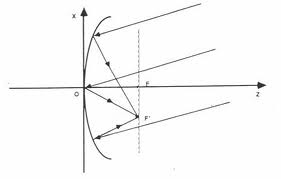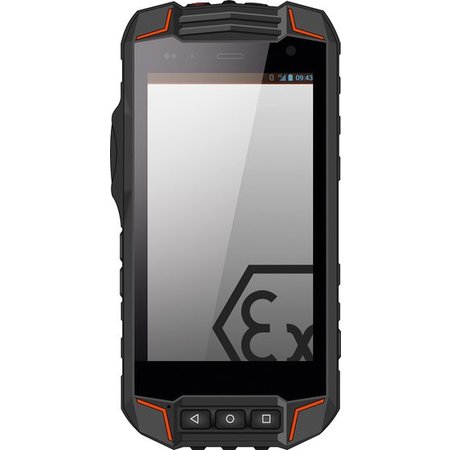Thinking about macro lighting, yesterday, I remembered I bought a 9" diameter, 1.5" focal length, rhodium plated parabolic mirror a few years ago.
I thought it might be useful to focus diffused light, with the subject farther from the apex than the focal point, so I dug it up yesterday, not knowing the concept is a Lieberkühn reflector.
Question:
I noted that the other examples I saw were much smaller. Is this a useful size or is it too large?
Thanks so much,
John
9" Mirror Useful for Lieberkühn Reflector?
Moderators: rjlittlefield, ChrisR, Chris S., Pau
-
JohnDownie
- Posts: 115
- Joined: Tue Oct 18, 2011 6:57 am
- iconoclastica
- Posts: 487
- Joined: Sat Jun 25, 2016 12:34 pm
- Location: Wageningen, Gelderland
An interesting question, John. It was one of my unfinished projects this past winter. It came to a halt because of some measurement mistake, but also because I was overcome by doubts. I use one of those Chinese solar cigaret lighters, which are much smaller than your mirror (about 12cm/5").
Until I read your question, I thought it wouldn't work for diffuse lighting since the parabolic mirror focuses parallel beams into its focal point. But now I see light beams from any direction are focused in a plane that contains the focal point too. Which probably is even better.

With a larger diameter miror you can focus larger light sources. It won't do moe harm, I suppose, than sitting in the way. Personally I wanted to use it with a flash and a fresnell lens to collimate the light to the mirror. I feared specular highlights or rings.
--Wim
Until I read your question, I thought it wouldn't work for diffuse lighting since the parabolic mirror focuses parallel beams into its focal point. But now I see light beams from any direction are focused in a plane that contains the focal point too. Which probably is even better.

With a larger diameter miror you can focus larger light sources. It won't do moe harm, I suppose, than sitting in the way. Personally I wanted to use it with a flash and a fresnell lens to collimate the light to the mirror. I feared specular highlights or rings.
--Wim
--- felix filicis ---
-
JohnDownie
- Posts: 115
- Joined: Tue Oct 18, 2011 6:57 am
I just read about the “black hole” for the first time.
Shrinking its apparent size seems like a potential advantage of the concept. If I could fit small, perofrated reflector to the front of a microscope objective, circling it with a 1/4” opening, the black hole could be pretty small. Assuming a plane where the light disc would be 1.5”, the black hole would be about 1mm, if my math is correct, and assuming an effective sub-reflector.
Shrinking its apparent size seems like a potential advantage of the concept. If I could fit small, perofrated reflector to the front of a microscope objective, circling it with a 1/4” opening, the black hole could be pretty small. Assuming a plane where the light disc would be 1.5”, the black hole would be about 1mm, if my math is correct, and assuming an effective sub-reflector.
- iconoclastica
- Posts: 487
- Joined: Sat Jun 25, 2016 12:34 pm
- Location: Wageningen, Gelderland
The black hole size is a function of working distance and the diameter of the front lens element. If your lens has a wide dark rim, you can close it down with reflective material until the size of the entrance pupil. But the black hole will still be there.
Altogether I think a better strategy is to decrease the contrast between the non-reflective lens opening and the reflective material around it. With a large miror as yours that will be easier than with my smaller setup.
Altogether I think a better strategy is to decrease the contrast between the non-reflective lens opening and the reflective material around it. With a large miror as yours that will be easier than with my smaller setup.
--- felix filicis ---
-
JohnDownie
- Posts: 115
- Joined: Tue Oct 18, 2011 6:57 am
My thinking was based on the theory that the effective size of the black-hole-causing objective would be reduced by the ratio of the diameter of the physical mirror to the diameter of illuminated circle.iconoclastica wrote:The black hole size is a function of working distance and the diameter of the front lens element. If your lens has a wide dark rim, you can close it down with reflective material until the size of the entrance pupil. But the black hole will still be there.
Altogether I think a better strategy is to decrease the contrast between the non-reflective lens opening and the reflective material around it. With a large miror as yours that will be easier than with my smaller setup.
If you disagree, could you please explain why?

- iconoclastica
- Posts: 487
- Joined: Sat Jun 25, 2016 12:34 pm
- Location: Wageningen, Gelderland
Imagine photographing a christmas bauble, one that acts like a convex mirror. The black hole is the reflection of the front lens of your camera. It increases in size when you come closer and decreases on retreat. (With many macro lenses this is no an option though).Since it is a convex mirror, you will also see the reflection of the room around you. If you's paint the walls and the floor white, the size of the reflection of the front lens of your camera doesn't change.
You will also see yourself reflected. So some improvement - in that the black hole really will be limited to the reflection of the front lens of your camera - may be got by adding a screen around the lens with a hole just large enought for the lens to peep through.
So, there are two options. One is to retreat so the reflection of the front lens of your camera becomes a tiny, unnoticeable, black spot. I think you will find yourself limited to using a macro-telephoto lens then.
The other option required a change of mind: stop thinking of black holes and focus instead on the reflection of the white ring. Start by making everything in the reflection black and subsequently design the light reflection you want to see. In any good product photos you may see examples of such designed reflections. E.g. on smart phones it's very often one half of the screen, diagonally devided:

You will also see yourself reflected. So some improvement - in that the black hole really will be limited to the reflection of the front lens of your camera - may be got by adding a screen around the lens with a hole just large enought for the lens to peep through.
So, there are two options. One is to retreat so the reflection of the front lens of your camera becomes a tiny, unnoticeable, black spot. I think you will find yourself limited to using a macro-telephoto lens then.
The other option required a change of mind: stop thinking of black holes and focus instead on the reflection of the white ring. Start by making everything in the reflection black and subsequently design the light reflection you want to see. In any good product photos you may see examples of such designed reflections. E.g. on smart phones it's very often one half of the screen, diagonally devided:

--- felix filicis ---
